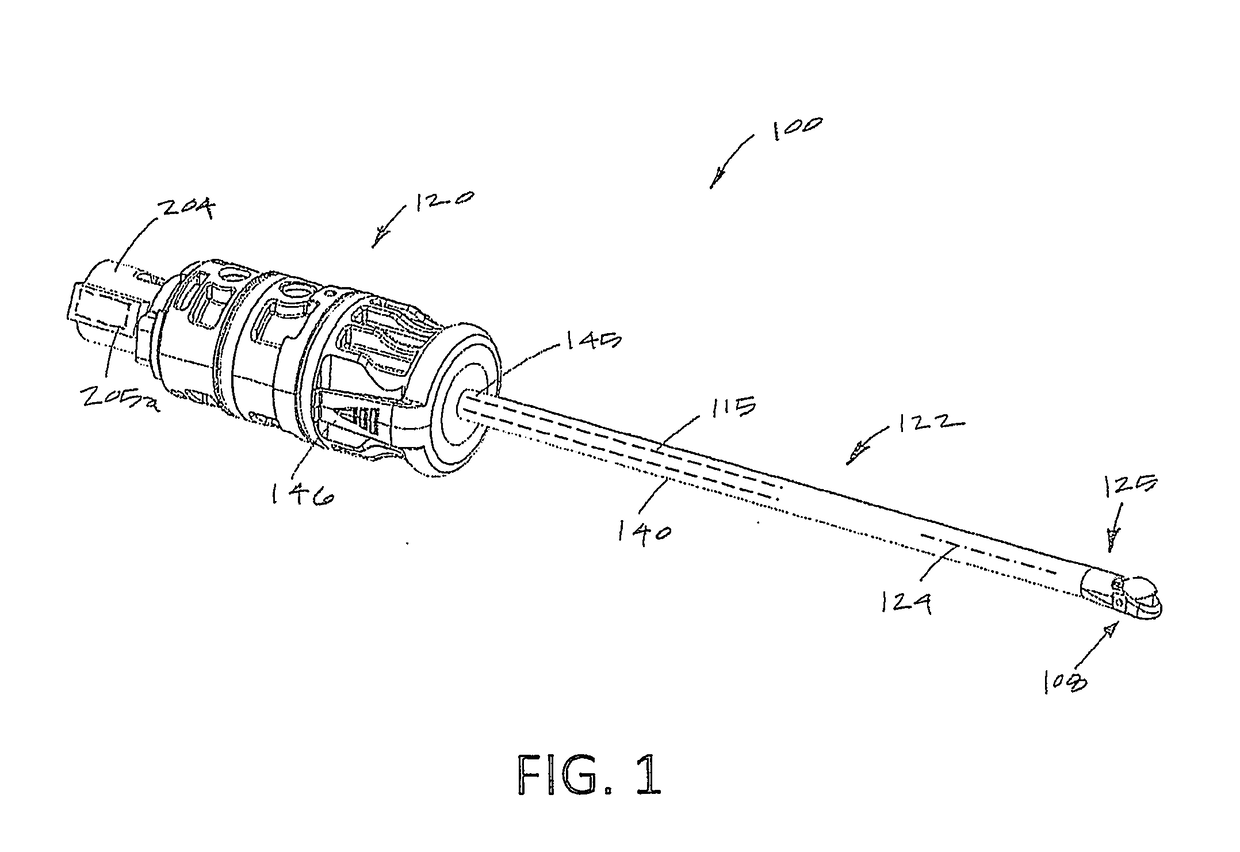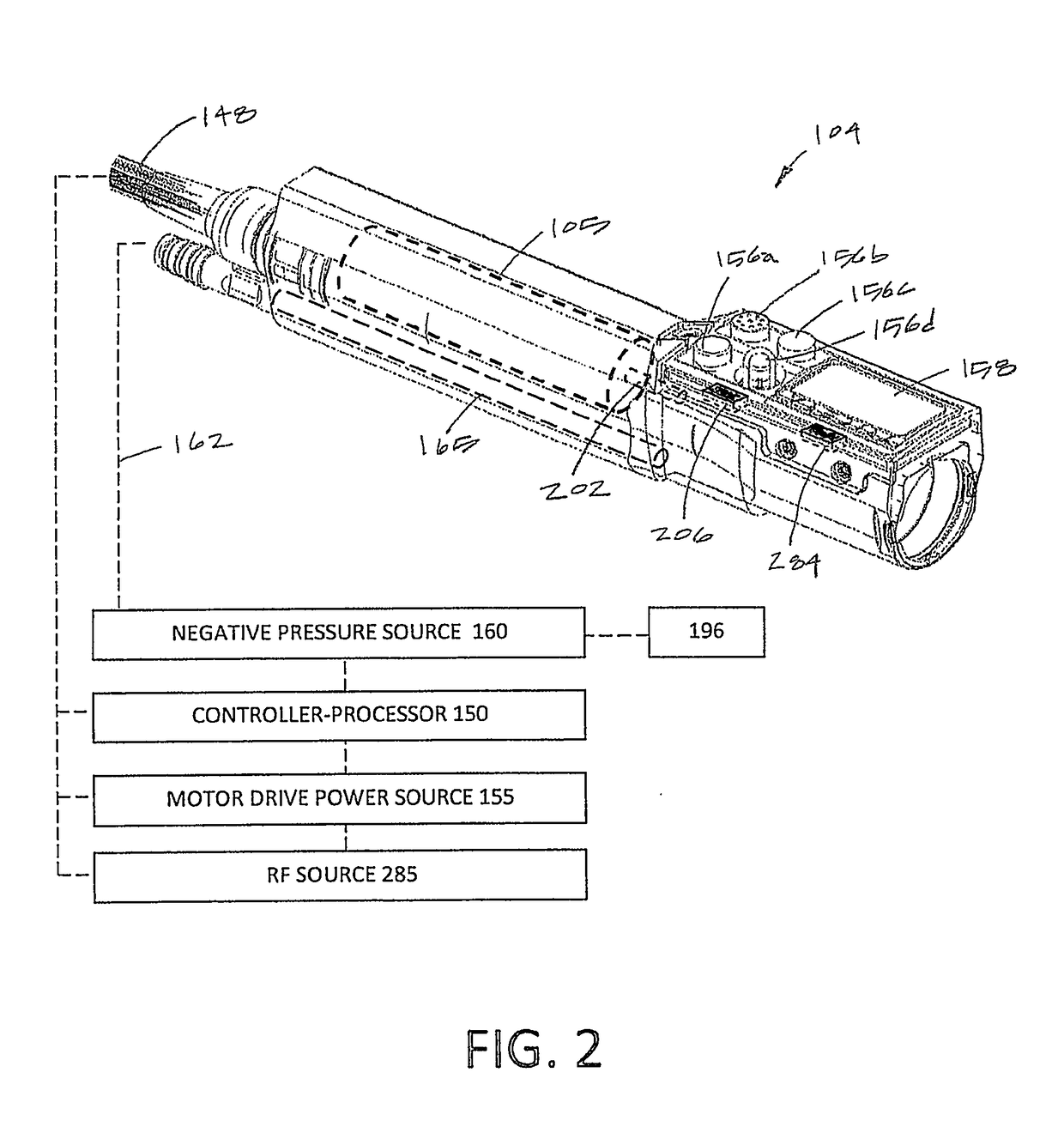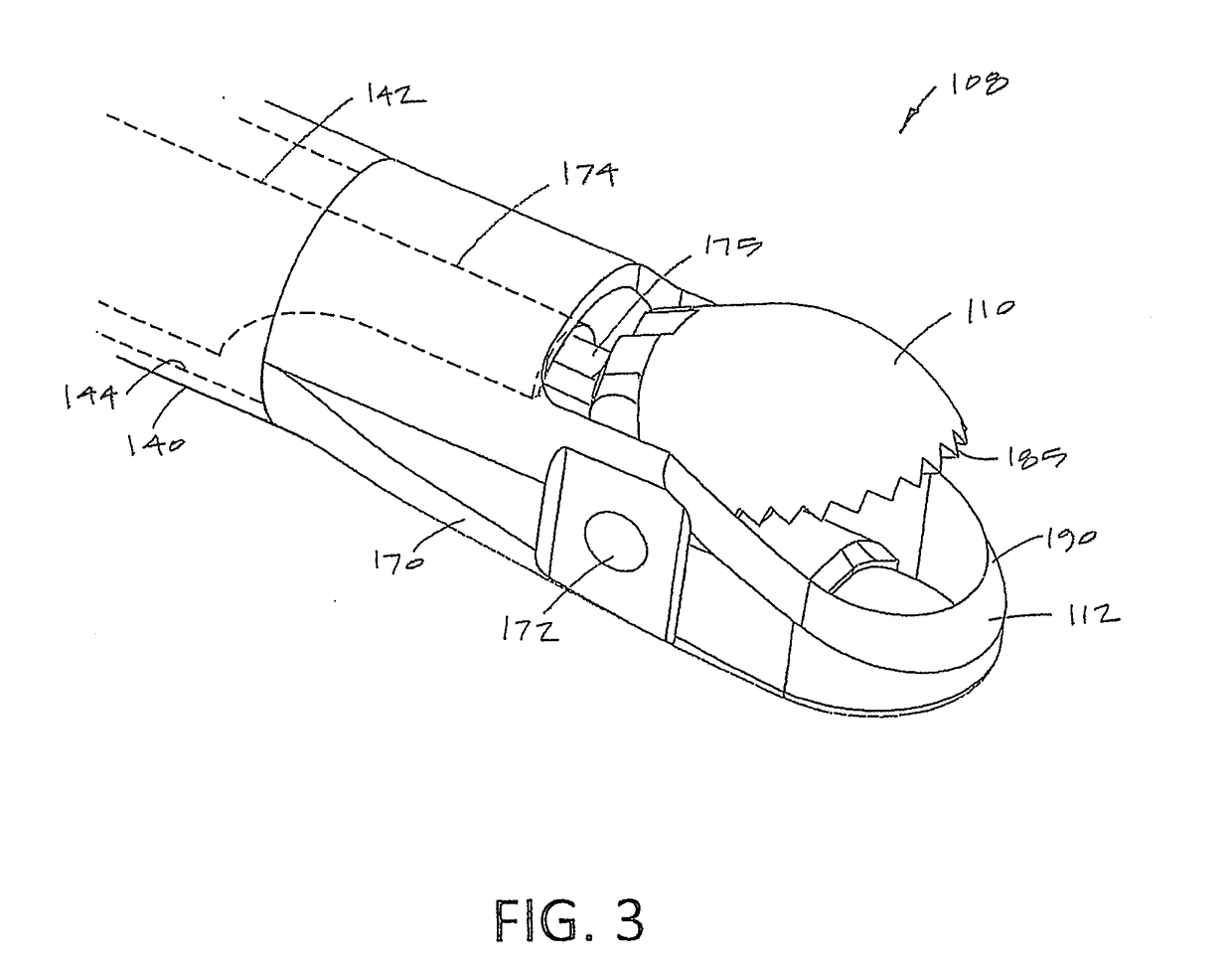Artroscopic devices and methods
a technology of cutting and removing devices and arthroscopic tissue, which is applied in the field of arthroscopic tissue cutting and removal devices, can solve the problems of limited force and drawbacks of limited force transmitted to the jaw structure, and achieve the effects of increasing force, maximizing mechanical advantage obtained in driving the jaw structure, and increasing closing for
- Summary
- Abstract
- Description
- Claims
- Application Information
AI Technical Summary
Benefits of technology
Problems solved by technology
Method used
Image
Examples
Embodiment Construction
[0045]The present invention relates to tissue cutting and removal devices and related methods of use. Variations of the invention will now be described to provide an overall understanding of the principles of the form, function and methods of use of the devices disclosed herein. In general, the present invention provides an arthroscopic cutter or punch for cutting tissue that is disposable and is configured for detachable coupling to a non-disposable handle and motor drive component. This description of the general principles of this invention is not meant to limit the inventive concepts in the appended claims.
[0046]FIGS. 1-5B illustrates a tissue cutting probe 100 with a jaw structure 108 that is motor driven to close and open the jaws in a single actuation that applies high cutting forces, or alternatively, the motor drive can be actuated to close and open the jaws sequentially at 1 CPS to 100 CPS (cycle per second) to progressively nibble or cut tissue. The probe can be used in a...
PUM
 Login to View More
Login to View More Abstract
Description
Claims
Application Information
 Login to View More
Login to View More - R&D
- Intellectual Property
- Life Sciences
- Materials
- Tech Scout
- Unparalleled Data Quality
- Higher Quality Content
- 60% Fewer Hallucinations
Browse by: Latest US Patents, China's latest patents, Technical Efficacy Thesaurus, Application Domain, Technology Topic, Popular Technical Reports.
© 2025 PatSnap. All rights reserved.Legal|Privacy policy|Modern Slavery Act Transparency Statement|Sitemap|About US| Contact US: help@patsnap.com



